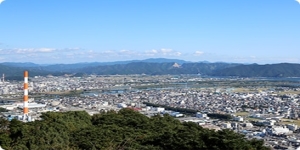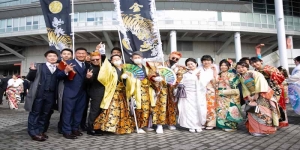The Suicide Forest : Aokigahara 青木ヶ原
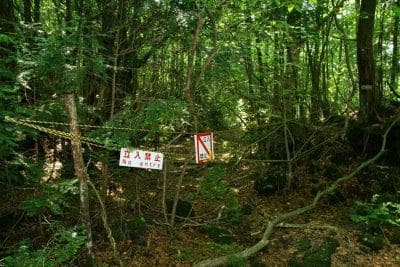
Aokigahara 青木 ヶ 原, or Jukai 樹 海 sea of trees, is a forest known by its unfortunately nefarious name of "Suicide Forest", mystical and mysterious presence and so much pain.
Aokigahara is a large green area with very tall trees that stretches for 35km² located at the northwestern base of Mount Fuji. The area, originated from Mount Nagaoyama eruption in 864, is characterized by caves left by lava flows that have allowed the formation of dense vegetation, making the area rather "dense" and silent as well as having magnetic disruption due to its geological nature.
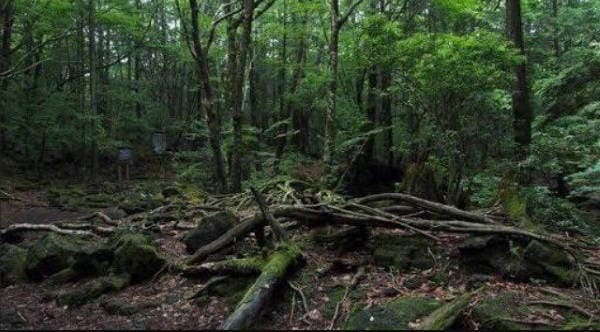
This particular feature has created the "perfect" destination for those looking for extreme excursions, that are often disastrous. The forest configuration makes difficult to navigate, and the walk in sight is complicated by the thick flora and the presence of trees that all seem to be the same.
For this reason hikers tend to use tapes that allow them to score their way back. This, however, creates problems because the area is inside the Fuji Natural Park, a protected park and therefore safeguarded. The use of tapes and other materials that can pollute or disrupt the environment are becoming a problem.
Unfortunately, the area is also sadly known to people who are being relegated to commit suicide. So much so that the name "Suicide Forest" is so well known and rooted in Japan that it is not even necessary to name Aokigahara.
The forest has been "protagonist", if you can to me the pass of the term, a suicide escalation that has seen a remarkable increase over the years. So much so that the local authorities have stopped giving information or statistics on the number of suicides or finds that were attempting to "clean up" the name of Aokigahara and not associate it with such a mischievous practice.
It's hard to clean up a name that has grown over the years. Forest itself sees linked to its name a mixture of mythology and mysticism difficult to dissolve.
In the 19th century the area was linked to what was called Ubasute 姥 捨 て, abandoning an old woman or more commonly call, oyasute 親 捨 て the abandonment of a relative.
At that time, unfortunately, the hunger and social conditions of the lower class population were poor in Japan, and in the darker and more severe periods for famine or disease, the oldest member of the family was abandoned to a far place so younger and healthier of the family, can continue to live, leaving the elder alone and away.
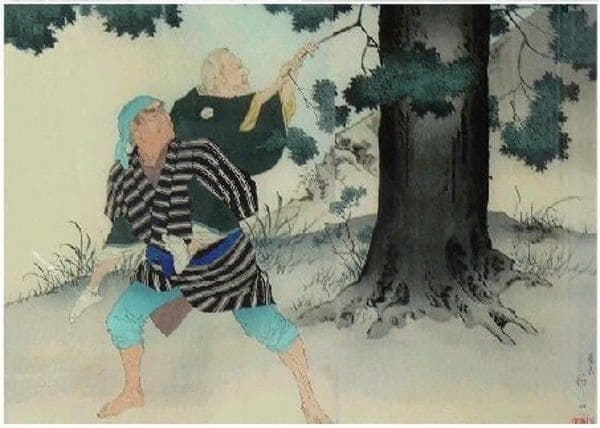
In 1960, the novel by Seichō Matsumoto, Kuroi Jukai (Black Sea of Tree), raises the fame and popularity of the Forest, leading, alas, more people to make it the place of their end.
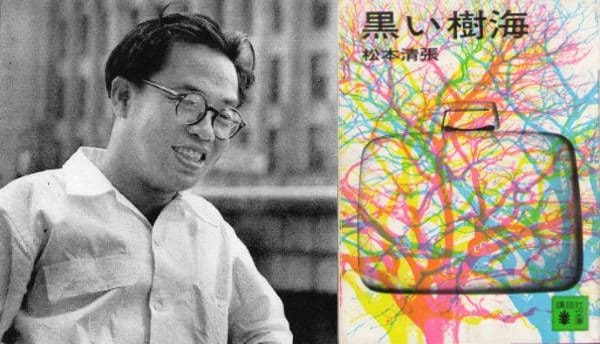
All this connects the mythology and the mysticism of the forest call the "home", the dwelling of the Yūrei 幽 霊, spirits or ghosts, as someone calls them, of those who have committed suicide and have not completed the natural cycle of life, leave their souls, their cursed and furious spirits to "dwell" the Forest.
People said that the same Yūrei are the cause of some vanish of people because they confuse the mind, enter in the heart of the person finding that dark corner, that area of sadness that allows them to deceive the people with sounds, visions and more, making them become the same part of the forest.
The Aokigahara Forest is an incredible and amazing place for its landscape, its flora and fauna. Walking surrounded by tall trees and so immersed in nature refreshes the spirit and soul. By being in the path and not getting lost in alternative paths.
Japan is nature, history, but it is also a myth and folklore. That is not why we should underestimate some stories or stories that make us aware of it. Respect for culture and places starts from respecting local traditions.

 English (United Kingdom)
English (United Kingdom)  Italiano (it-IT)
Italiano (it-IT) 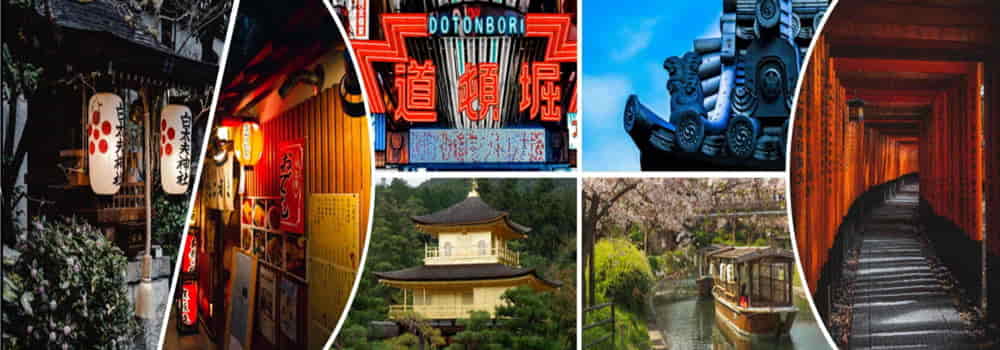
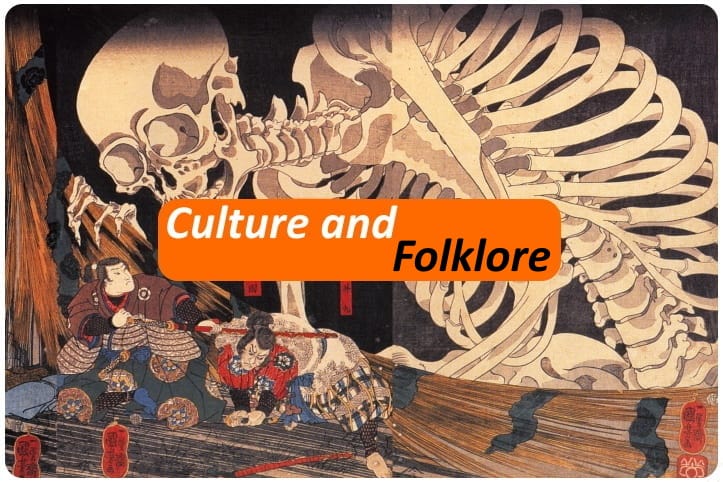
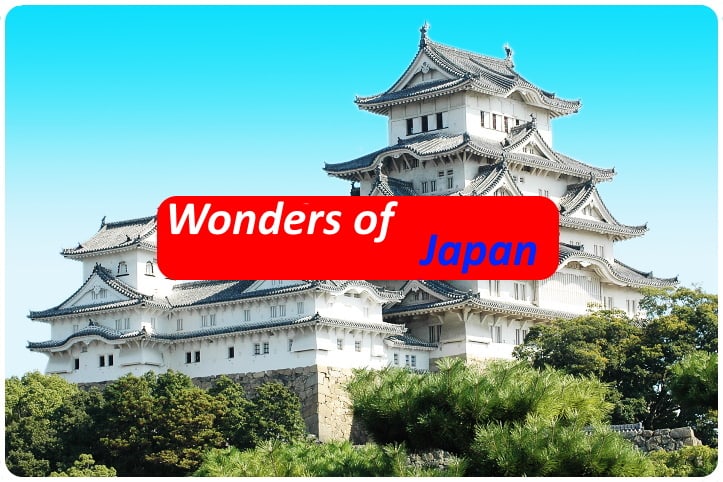
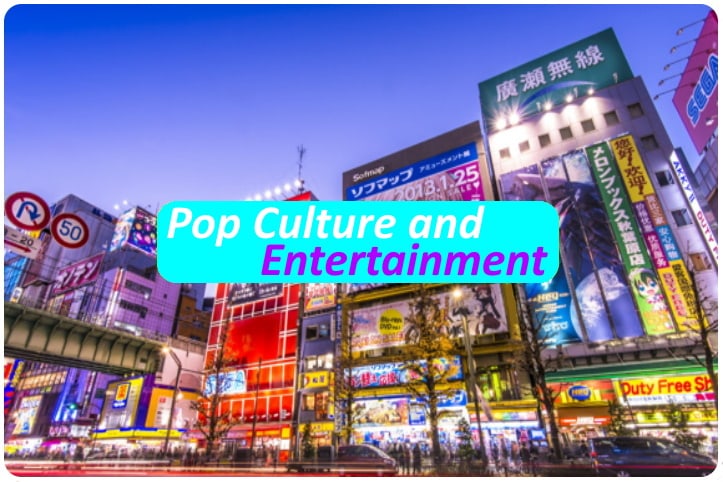



![[Review] Princess Toyotomiプリンセス トヨトミ](https://www.fukainihon.org//cache/mod_jt_contentslider/fdfb524f85518b9476158c79c8ea022f_328.png)
